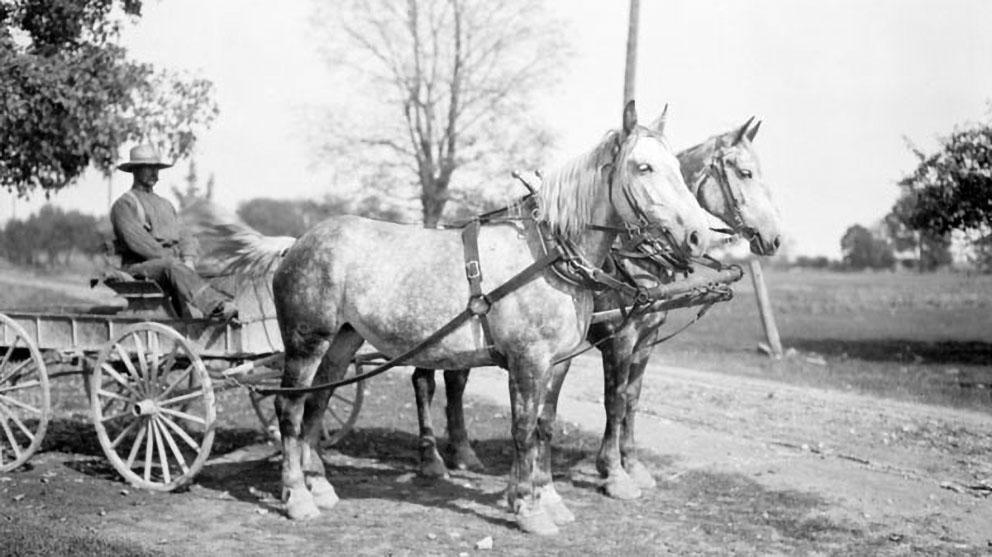You are here
The Percheron Horse

The origin and development of the modern draft horse began in Europe. Historical documents about each breed can be found in National Archives stored in countries of origin. Records in France, Germany, the Netherlands and the United Kingdom include detailed accounts of the introduction and dissemination of various breeds throughout North America. Archives reflect the views of contemporary importers and breeders about the selection, feeding, and general management of stallions, brood mares and foals.
The Percheron is a breed of draft horse that originated along the Huisne River valley in western France, part of the former Perche province from which the breed takes its name.
History of the Percheron Horse
Alvin Howard, D. AGR, LLD, published one of the earliest North American accounts of the breed. The document, The History of the Percheron Horse, accompanied the 1917 Chicago Breeders Gazette.
Howard’s early account of the Percheron draft horse paralleled his history of the Shorthorn and Hereford breeds of cattle.
Special permission is required to search archives stored in Paris. Files contain details about registration, stallion inspection and stallion selection bought for the government stud at Le Pin, from which North American strains evolved.
The Percheron horse has existed as a distinct type from ancient times. The earliest Percheron may have been a cross between the Barbs, brought by the Moors, and the large Flemish (Belgium) draft breeds.
Some feel Arabian bloodlines eventually were introduced to add hardiness and refinement. During the 1800s, the French government developed the breed to use as cavalry mounts.
Historians describe evolution of the Percheron breed as falling into four distinct periods:
1. the Percheron’s association with the famous French chargers of the Middle Ages;
2. their presence as draft animals on heavy coaches preceding the railway;
3. their adaptation to demands of the plow; and
4. the modern “ton horse” — the big grays and blacks marching proudly to the music of nations’ show rings.
A Powerful Draft Horse
The Percheron is among the gentle giants of the horse world. Though a popular and powerful draft horse, the Percheron today is equally comfortable under saddle and in harness.
The Percheron represented the most popular draft horse breed in America through the early 1900s, earmarked by the largest draft horse breed registry. Like many draft breeds, their numbers dwindled as the farm tractor and car became the new “horsepower,” and draft horses were no longer required for farm work.
For a time in the United States, all draft breeds appeared on the watch list of the American Livestock Breeds Conservancy, but are now growing in numbers and have been taken off the list. The Percheron Horse Association of America includes more than 3,000 members in 50 US states.
Percheron Characteristics
The Percheron has heavily muscled shoulders, forearms and haunches, and gives an overall impression of compact strength. Their necks are sturdy and elegantly arched. Percheron horses stand 16.2 to 17.3 hands high (1.7 to 1.8 metres) and weigh from 1,800 (816 kg) to 2,600 pounds (1179 kg), depending on the bloodlines. Percherons are born black and then turn gray as they mature. Their manes and tails can be thick and often wavy. Unlike the Clydesdale with heavy leg feathering, the Percheron's legs are clean with no long hair. They are a bit livelier than some of their draft horse relatives. The Percheron is often out-crossed with Thoroughbreds, warmbloods and Baroque breeds such as Andalusians and Lusitanos to be used as sport horses in dressage, eventing, hunting and pleasure riding.
Their stamina is legendary; breed enthusiasts in the 1800s touted their ability to travel nearly 40 miles (64 km) a day at a trot.
Article written by Dr. Ron Clarke
